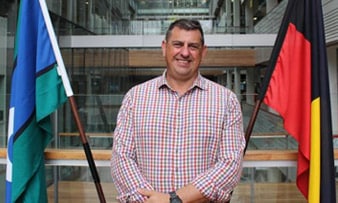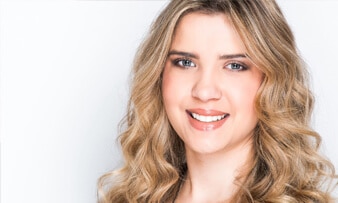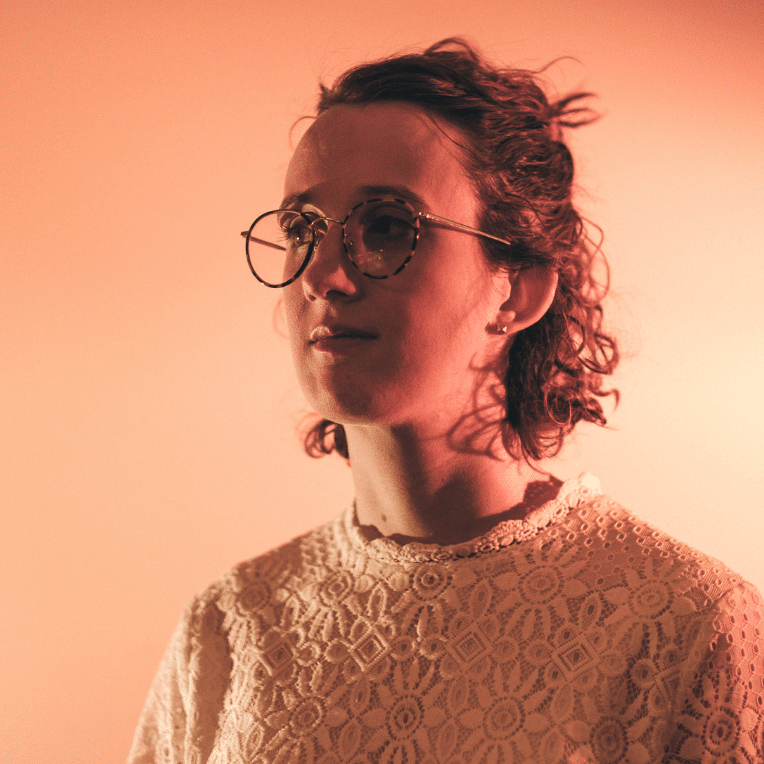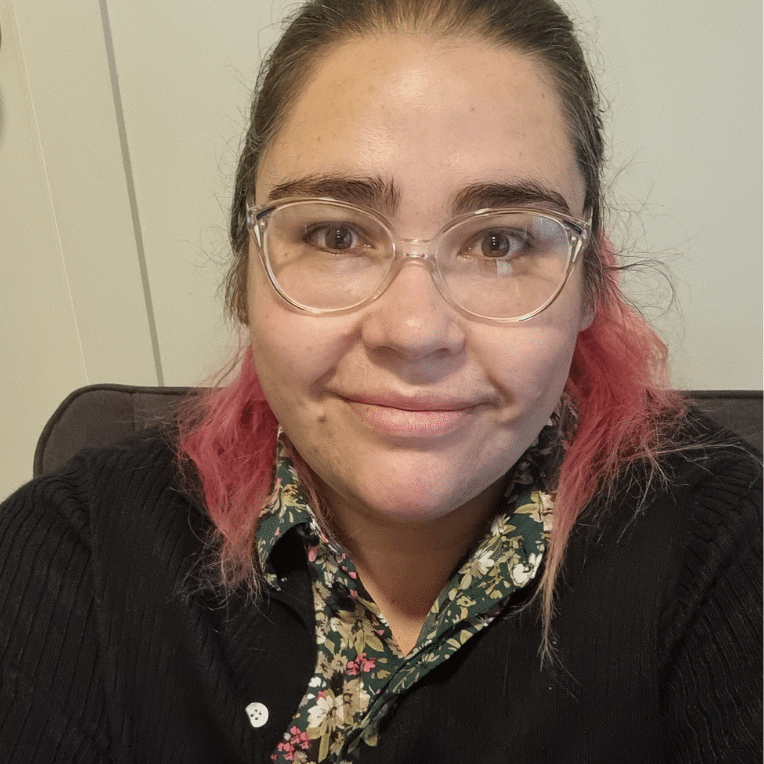Share this episode on
In this episode we’ll attempt to get to the bottom of why Aboriginal people experience disability at a greater rate than non-indigenous Australians and what could be done to help Australia’s first people with disability.
Dr Scott Avery is the Policy and Research Director at the First Peoples Disability Network (Australia), and Senior lecturer at Western Sydney University.
Produced by: Black Me Out Productions
Additional reading
View transcript
Growing Bold and Disability in Aboriginal and Torres Strait Islander Communities
Welcome to the Grow Bold with Disability podcast, brought to you by Feros Care. A podcast dedicated to smashing stereotypes and talking about the things people with disability care about most, to help us live bolder, healthier, better connected lives. I’m journalist, Pete Timbs. And I’m Tristram Peters. I work for Disability Service Directory, Clickability and am a wheelchair user living with spinal muscular atrophy.
Today’s episode of Grow Bold With Disability is Growing Bold and Indigenous Disability, and our guest is Dr Scott Avery, a senior lecturer in Aboriginal and Torres Strait Islander disability at Western Sydney University and an advisor at the First Peoples Disability Network of Australia. In this episode we will attempt to get to the bottom of why aboriginal people experience disability at a greater rate than non-indigenous Australians and what needs to be done to help Australia’s first people with disability. Dr Scott Avery Welcome to Grow Bold with Disability.
Thank you very much for the invitation. Looking forward to the conversation.
Scott, the very concept of disability is foreign in many aboriginal communities, and there’s no equivalent word for disability in many Aboriginal or Torres Strait Islander languages. Can you tell us how our indigenous people view what we call disability?
Look, if you want to understand Aboriginal disability from an aboriginal perspective, you kind of need to cast your mind back some 25,000 years to ancient times and out in New South Wales there’s a National Park, The Lake Mongo Park and amongst them are some of the oldest aboriginal footprints known on this earth and they’re embedded in clay. And amongst those footprints is this single right line of footprints. So, it goes, right, footprint, right, footprint, right footprint. There’s no corresponding left footprint and the aboriginal Elders out at Lake Mongo said it’s actually a one-legged man on a hunt. And they did some more investigation and said, well, this man is actually part of it. He’s actually active hunting. And he’s part of his community, and what this speaks to is a culture that is inclusive of people with disability. So we don’t actually see disability in a negative, as we’re often taught to think off. That notion of disability, the dis part, the negative part was actually introduced as part of the colonising process when Europeans came to Australia and it just became institutionalized. It’s actually a concept that was developed overseas in Europe in the late 1800’s and evolved from there. So culturally, this idea that people are lesser is as you said a foreign concept. It actually makes it difficult to navigate some of the support system, which are predicated on people actually being able to identify as having a disability or being diagnosed so there is a really complex mix of cultural and social problems at play here.
So, what impact on a whole did colonisation have on the disability perspective of the Aboriginal community?
So, with colonization, there are two parts to the colonization story, at least as many actually. But a lot of people know about how aboriginal people were dispossessed from their land and often violently so. But at the same time this idea of disability was imported. So, you gotta think the late 1700’s, the European industrial revolution was going on at that time. That was a very novel concept back then, and people were starting to industrialize the production process. And people were seen as a commodity. And the origin of disability, they said, “Look, if you are not able to participate in the production process, the streamlining of the production process, you are disabled.”
And that comes from Europe and that was actually imported into the colony of New South Wales at the same time. So, if you’re an aboriginal person, you’re getting dispossessed from your land. But if you also a person with disability you’re kind of getting othered from society. So one of the early things that came in the colony was the idea of the asylums where people will basically picked up on and hidden away from society. And that’s something that came from the early 18th century Europe and England. So, you’ve got these two things going on. So, the idea and the whole story, the social history of aboriginal people with disability hasn’t been told and hasn’t been conveyed because it’s just being hidden away from society.
And that effect would have had enormous influences on marginalizing people with disability. Aboriginal and Torres Strait Island of people with disability in Australian society wouldn’t it?
Oh, absolutely, and you actually see some of the social issues and some of the inequality that aboriginal people with disability face now. You can almost trace it back to those early days because a lot of the idea of othering and marginalizing people, those practices became institutionalized. So, one example I’ll give to you is in relation to criminal justice. As I mentioned in the early 1800’s, they had what they used to call idiot houses. That’s very confronting language now. But the idea of the idiot houses in the 1800’s was that would pick people up with cognitive impairment and hide them away from society. Now, if you take that practice and you look at juvenile justice. So, if you have a look, the extraordinary rates of aboriginal people with disability, particularly cognitive impairment in juvenile justice, basically 0.03% off the population. So less than half a percent of the population is making up something like 36% of people inside juvenile justice. So that’s an extraordinary difference there, and you kind of think well, that practice of hiding aboriginal people with disability away from society still continues, we call it juvenile justice. It’s put in a much more palatable way. But we haven’t really altered that idea of othering and marginalising people.
So Scott, as we heard in the intro, Aboriginal People experience disability at a greater rate than non-indigenous Australians. Why, why is that? Look, I think that’s actually a big question we really need to look at. But I think what happens is the rate of avoidable disability is greater in aboriginal communities compared to mainstream or non-indigenous community. And a lot of that has to do with access to sort of early intervention support. So, an example I might give is someone with diabetes. So if I’m in a metropolitan area and I have access to health services, I might be diagnosed with diabetes. And it’s considered like a chronic illness that I can manage. I might have some medicine or some therapies that I can access to stop my pre-diabetes converting to a fully-fledged diabetes. So in Aboriginal communities a lot of that early intervention preventative health access is not there. So what happens is that the what is a chronic disease becomes an acute disease because no one’s trying to stop that pathway. Um, and so really, something like diabetes is a chronic disease in non-aboriginal communities. It pre disability in disability. Another example has to do with some hearing help. So, a lot of Aboriginal Children encounter a lot of primary hearing health problems. But what happens is they keep getting ear infections like Otitis Media. And it’s not treated and not picked up and diagnosed and corrected. That can then turn into a longer-term disability, a long-term hearing impairment just because it hasn’t actually been managed in the early stage. So that’s one of the possible reasons, but I don’t think we really know. And I don’t think we’ve done enough work in actually identifying what’s the real source of some of these. Digging down into why there are such different rates, you know, it’s almost 22.2 times the rate off nonindigenous people.
And another piece of research said that Aboriginal and Torres Strait Islander people with disability are mostly cared for within their extended family rather than by professional service providers. Is there any insight as to why that might be the case?
There’s a lot of cultural roles that come into it and again, when I’m talking about the researcher, this is just, you know, it’s a very under serviced area of research. But cultural roles tend to be, so Aboriginal Women, the Aunts, the Aunties tend to take on an informal, caring role for people with disability in their communities. But often this is unsupported. So it’s not like they are denying the support, you know, or turning support away. They are actually doing it because that is their cultural role. And Aboriginal people have to do a lot of work arounds. So particularly in remote communities, things like, you know, the footpath might not be in the same state as you might get in metropolitan areas. So people kind of saying, well, we need to work around that just to have a quality the best quality of life we are able to make for ourselves. But what happens is all these workarounds let’s government who could be better at providing some of these support off the hook. Um and I think this is one of the things that we want to draw attention to, is the burden this places on the informal carers when they have to operate in an unsupported capacity?
Yes. So the support is not really culturally appropriate. I found an excerpt from the Australian Human Rights Commission Social Justice, native title report in 2015 which I thought was very important. A young indigenous woman by the name of Halley said” I grew up without being accepted. I had to choose between my identity as deaf or aboriginal. I went to a deaf school and I didn’t have the same opportunities as my brother and sister to celebrate being aboriginal”. I find that quite important. So she got the support to go to the deaf schools. But it wasn’t culturally appropriate. She sort of felt separated from her actual aboriginality if that is a word. So how do we address that?
Look the way that, um, service systems and policy are designed in Australia and you see this right through the world. They tend to focus on one aspect of marginalisation. So there might be a lot of work, for example, a close the gap framework, which looks at indigenous disadvantage. Um, and the national disability strategy might look at disability, but they’re not connected. So if you have both and the way is designed, look if you are an aboriginal person you’ll get picked up and it is almost incidental if you have disability. And the opposite applies in the disability strategy. Look, if you are a person with disability you’ll get picked up if you are an aboriginal person. But it’s incidental to how they are designed. Because if you get multifaceted marginalisation so you might experience structural racism and structural ableism because your disability, then that compounds. And what’s getting found out now is those kind of a policy and service systems that focus on one aspect of your marginalisation but not both are getting found out that they are not adequate to capture that unique, multifaceted discrimination of structural factors. So if you are an Aboriginal person with disability often you kind of have to choose. And this comes up in the Education System, funnily enough, with my research and people saying I had to take the box, But I was only allowed to tick one box. Could I tick that I was an Aboriginal person, or do I tick that I need some extra support to support my child with disability. It’s like you couldn’t have both. So we are trying to bring attention to this nation that if you have both, the policy frameworks that operate independently of each other need to talk with each other a little bit more. And the way to do that is actually engaging with the people themselves, the Aboriginal people with disabilities. Because they don’t put themselves in boxes. They don’t live in silos. They have to deal with this sort of bureaucratic arrangement that’s organised on one aspect. So I think the way to solve that is hearing more stories about the experiences of Aboriginal people with disability. And getting them to have greater impact and influence in how policies and services are designed to make them, both culturally inclusive and disability inclusive.
Scott, you are hearing impaired. What was your experience? Just off the back of that, the culturally appropriate support. What was your experience growing up?
Look, it’s funny. I’m profoundly deaf. So it was like, you get to pick one thing and mine was the deaf story, I guess. I recently got involved with the First People Disability Network and learned lot around culture and how important it was. And what I’ve found is that identifying to the Aboriginal culture gives people a strength so it was something they could be proud of and positively assert their identity through. And that is certainly something with me as well. And what it does, it kind of counteracts some of the discrimination you get in other aspects of your life. That you’re part of a community because if you have an aboriginal culture you are actually part of a community and people encounter so many aspects when they’re on their own, they kind of get picked off the experience and the discrimination they get. It could be racism, it could be ableism, but it’s very isolating. And what the aboriginal culture gives is a way for people to come together so they share experience in a positive affirmative way. And I think that’s what I’ve enjoyed so much about the nature of my work because I’m so closely affiliated with an organization, a fantastic organisation called the First Peoples Disability Network. And they’re an aboriginal community organization. And you really do feel like you’re part of the family. And there are other aboriginal organizations out there doing service work or doing research, and you do feel like you’re included because it comes back to what I was saying before about this culture of inclusion. Aboriginal people do this intrinsically. It’s innate to them. It’s part of their DNA. It’s only kind of when you leave your community structures that you encounter some of this nation of you know, the deficit-based talk around disability. You know, we were someone that needs to be fixed, someone needs to fix my hearing. You don’t get that with the Aboriginal community, you’re more accepted. So that’s my experience. I draw a lot of strength from being part of it, that aboriginal culture.
Absolutely amazing in terms of that, that community engagement and overcoming that isolation. How do we take that particular concept of disability more broadly throughout Australia because as someone with a disability myself, it’s always a negative connotation of needing to be fixed and so on and so forth. How do we take that and share that with more people?
Look, it’s funny you said that cause I’ve just been writing a paper. And I thought a lot of people with disability look to this cultural inclusion go “we want that,”
you know, even if you’re not Aboriginal or Torres Strait Islander. I don’t want to overreach here but I think what we’ve done is we’ve found this wonderful cultural value of inclusion and it’s supported by the research. It exists, aboriginal people with disability participating in community and culture. The same rate as non-aboriginal people without disability, and it has a positive effect on their health. And that’s where we’re at. That’s what we know through the research. And we have exposed this wonderful idea which counteracts some of the deficit. I think the frontier is exactly where you are at. How do we actually make this work in a service setting and what it requires? It does require a bit of a mind shift to how you see services, so you don’t see people as people who need to be a fixed or accommodated. It’s about how to include them. It’s all about inclusion. And so it is a bit of a mind shift for services to take. And I would hope by talking like this, on the podcast here today people are thinking about some of the services that they might provide and go “wow do we build in this inclusion as sort of frontier work in our service work?”
I think that conversation is still needing to happen, but I think we’re getting ready to have that conversation now.
This is definitely a conversation that needs to be had. Now Scott, we always wrap these episodes up with one question relating back to the title of the show. And that is what does living a bold life mean to you.
Look, I just think it means being proud of who you are. Being able to wake up and just get on with your life. I’m proudly Worimi, which is my Aboriginal Nation. But I’m also proud of my profound deafness. I enjoy it. It’s a beautiful thing, you know that I have. And I can be like that and people see that as anything different. And I think that’s what’s being bold is. That everyone, every person with disability, should be feeling like that, that their chest pumps up. They’re part of a wonderful community.
Dr Avery, thank you so much for joining us today on the Grow Bold with Disability Podcast brought to you by Feros Care. And listeners can find out more about Dr Avery’s work and the great work being done for Aboriginal and Torres Strait Islander people with disability in the links provided in today’s episode show notes. Scott, thank you so much for your time today.
My pleasure. Thank you very much for the invitation.
Thank you for listening. And if you have enjoyed today’s episode that make sure you subscribe to the podcast, Grow Bold with Disability and if you like what you heard please take a few moments to pop over iTunes and give this a podcast a quick rating so we can continue these conversations and encourage people to grow bold.
This podcast is brought to you by Feros Care, an NDIS partner delivering local area coordination services in Queensland, South Australia and the Australian Capital Territory. Feros Care is a people care organisation committed to helping people live bolder lives. We call it Growing Bold and for over 25 years Feros has been making it real for both older Australians and those living with disability. To find out more, head to Feroscare.com.au.
View podcast disclaimer
The content and views discussed in this podcast series are those of the individuals involved. They are not necessarily condoned by, or, are the views of Feros Care or its employees.
Our Guest






